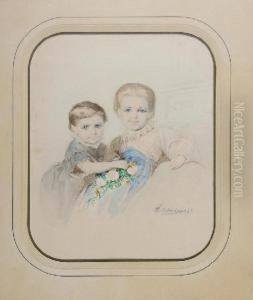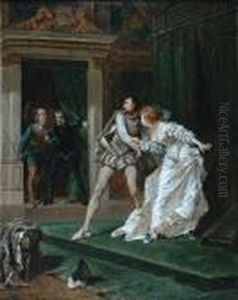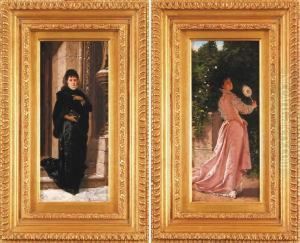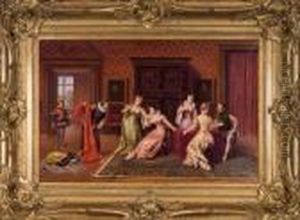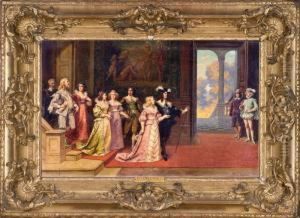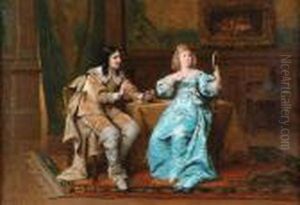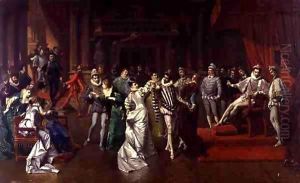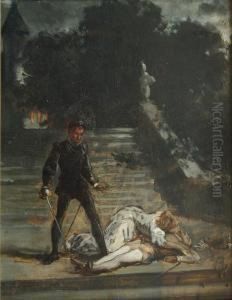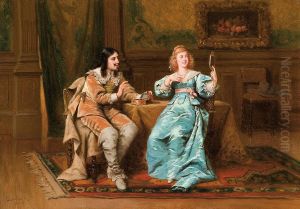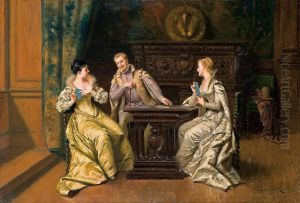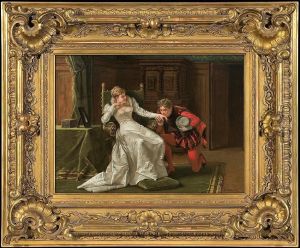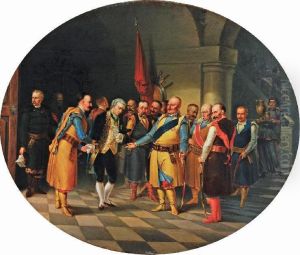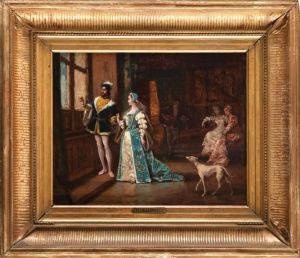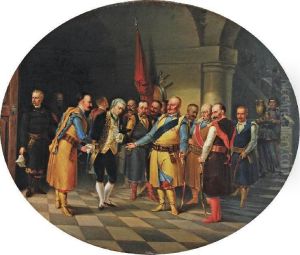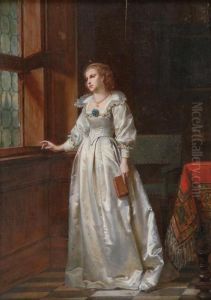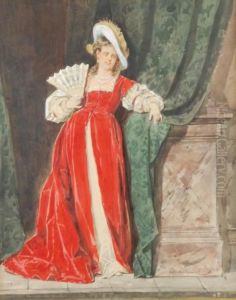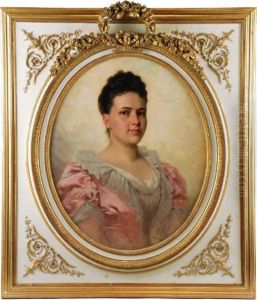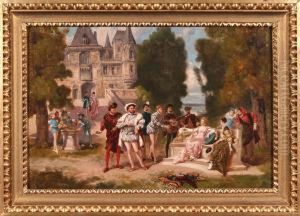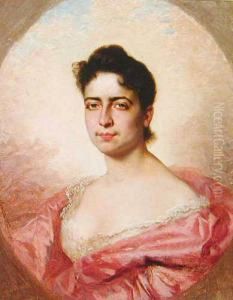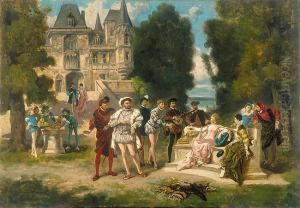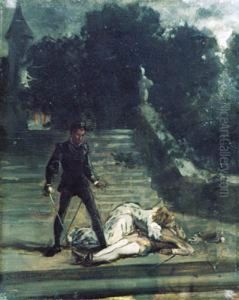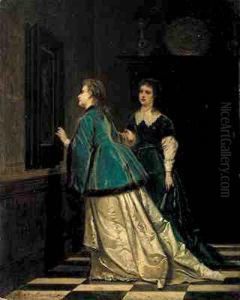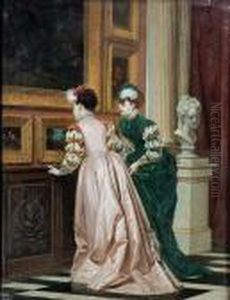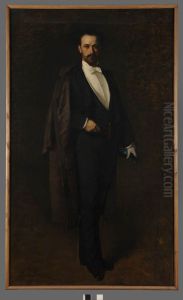Wladyslaw Bakalowicz Paintings
Wladyslaw Bakalowicz was a Polish-born painter who achieved recognition in the 19th century for his work in France, particularly during the Second Empire and early Third Republic. Born in Warsaw, Poland, in 1833, Bakalowicz was part of a wave of Polish artists who emigrated in the wake of political turmoil and insurrections in their homeland. He moved to Paris, which at the time was a hub for artists from around the world, seeking education and exposure in the art capital of the era.
In Paris, Bakalowicz became associated with the French art scene, absorbing the influences of contemporary styles and trends. He is often categorized as part of the academic art movement, characterized by its adherence to the standards of the prestigious French Academy of Fine Arts. Bakalowicz's works typically reflected the refinements and elegance of the academic style, with a focus on historical and genre scenes, which were popular among the Parisian bourgeoisie.
Bakalowicz was known for his meticulous attention to detail and his ability to capture the textures of fabrics and interiors. His paintings often depicted scenes from the 17th and 18th centuries, evoking a sense of nostalgia for France's past grandeur. He exhibited his works at the Paris Salon, the official art exhibition of the Académie des Beaux-Arts in Paris. His paintings were well received, and he garnered a reputation as a skilled painter of historical scenes and detailed interiors.
Despite his success in France, Bakalowicz remained connected to his Polish roots. He was part of the Polish expatriate community in Paris and sometimes addressed Polish historical themes in his work. However, his career was primarily built in France, where he spent the majority of his life.
Wladyslaw Bakalowicz passed away in 1904, leaving behind a legacy as a painter who bridged his Polish heritage with French academic art traditions. His works continue to be appreciated by collectors and art enthusiasts, and they can be found in museums and private collections around the world.
